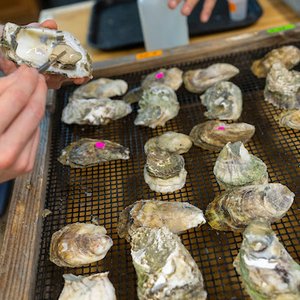Introduction
The brine shrimp (Artemia) is in the phylum Arthropoda, class Crustacea. Artemia are zooplankton, like copepods and Daphnia, which are used as live food in the aquarium trade and for marine finfish and crustacean larval culture. There are more than 50 geographical strains of Artemia. Many commercial harvesters and distributors sell brands of various qualities. Approximately 90 percent of the world’s commercial harvest of brine shrimp cysts (the dormant stage) comes from the Great Salt Lake in Utah. However, the lake’s cyst production is heavily influenced by freshwater inflow, and the supply varies dramatically. The cost of good quality cysts fluctuates with supply and demand; buyers might expect to pay $12 to $40 or more per pound (1/2 kg). Normally 200,000 to 300,000 nauplii might hatch from each gram of high quality cysts.
This publication describes the process of hatching Artemia cysts for use as larval food for cultured species, and the benefits of Artemia as a food source.
Keywords
Artemia, finfish
Author
Granvil D. Treece, Texas A&M University, Sea Grant College Program
Publication
Southern Regional Aquaculture Center (SRAC) Publication No. 702
Download as PDF from link below:







